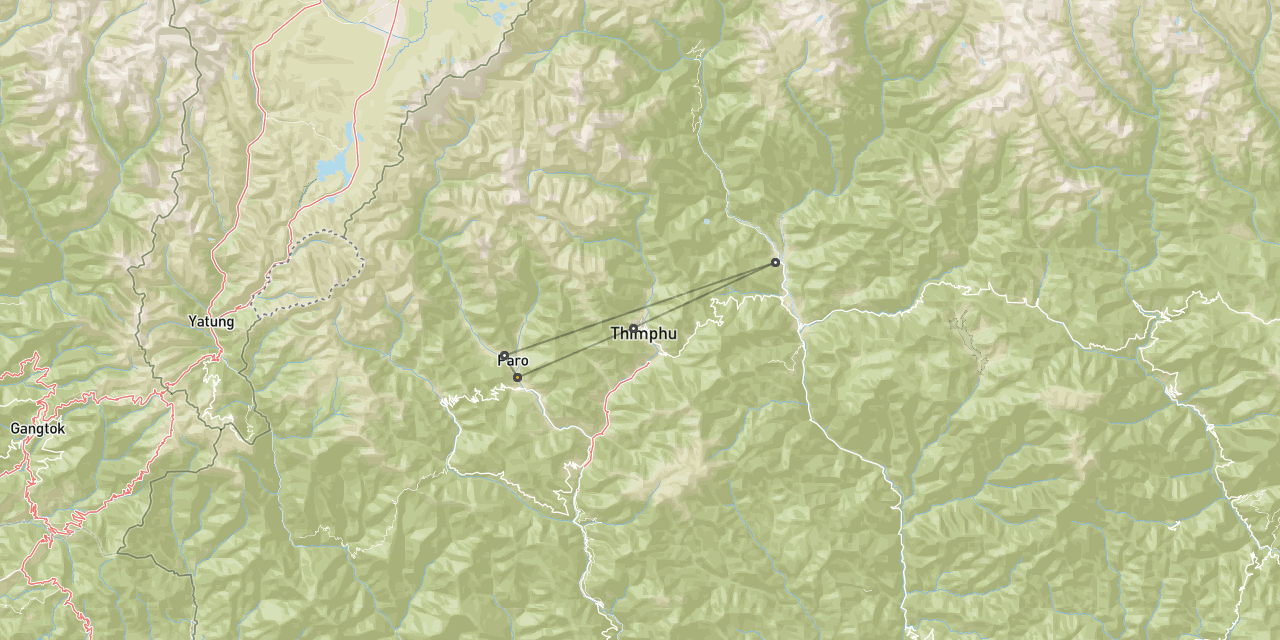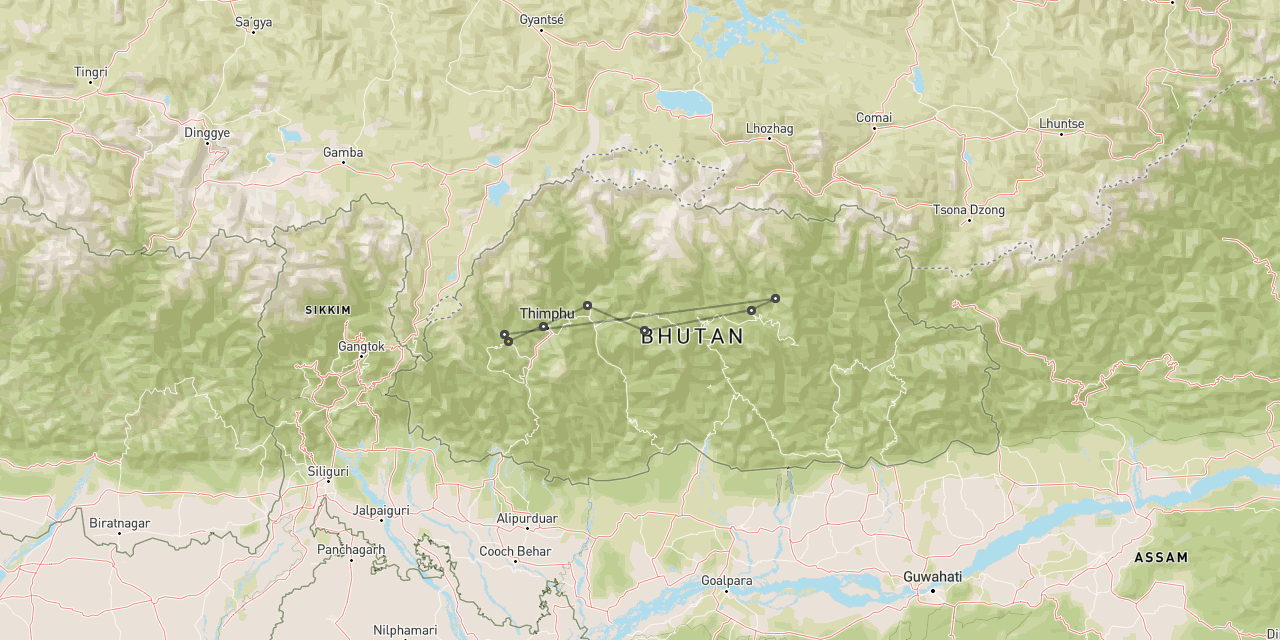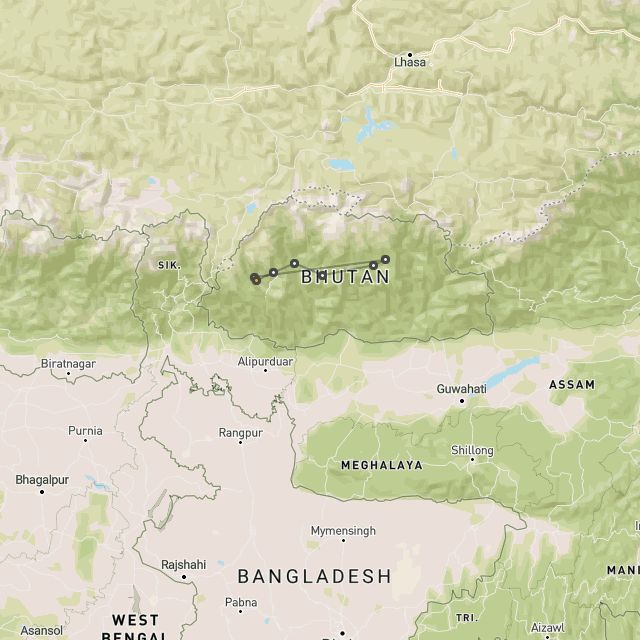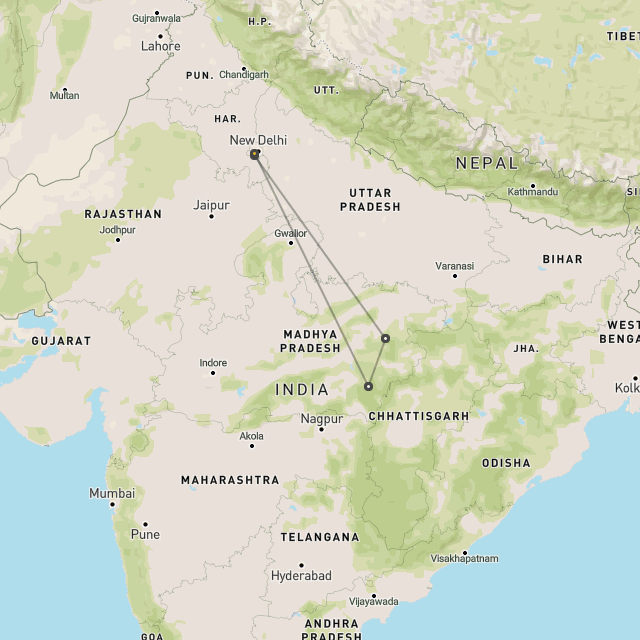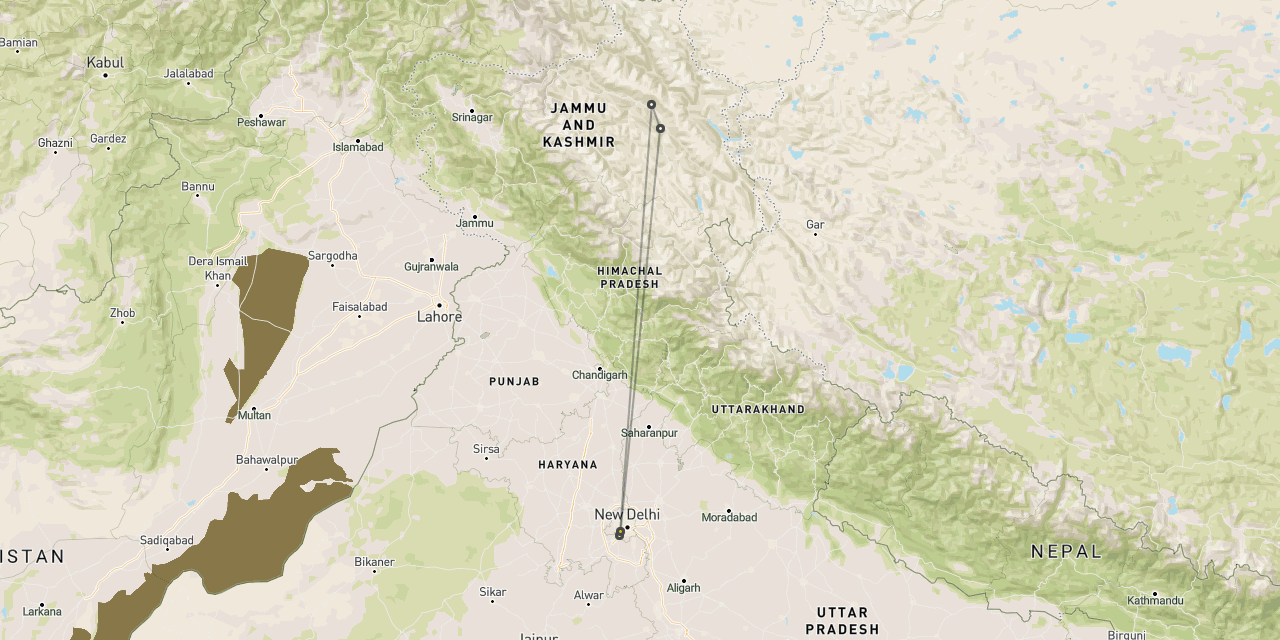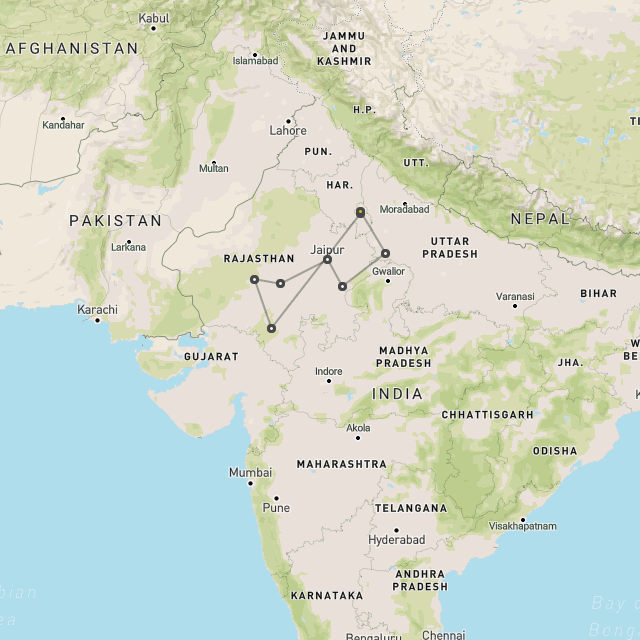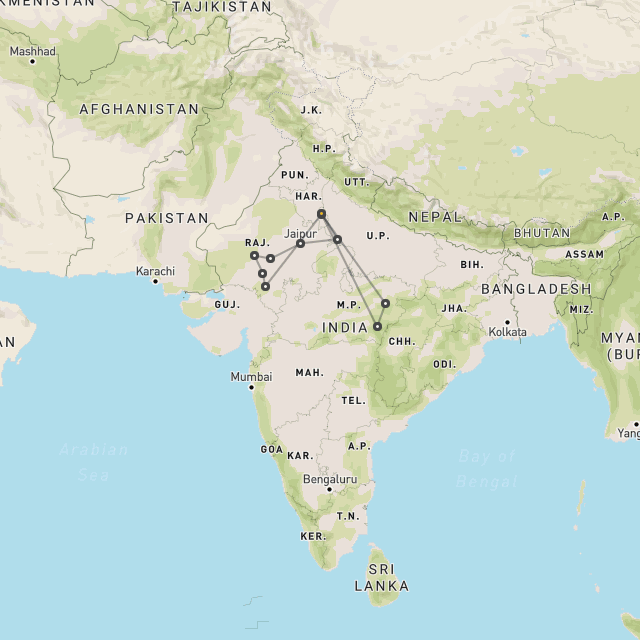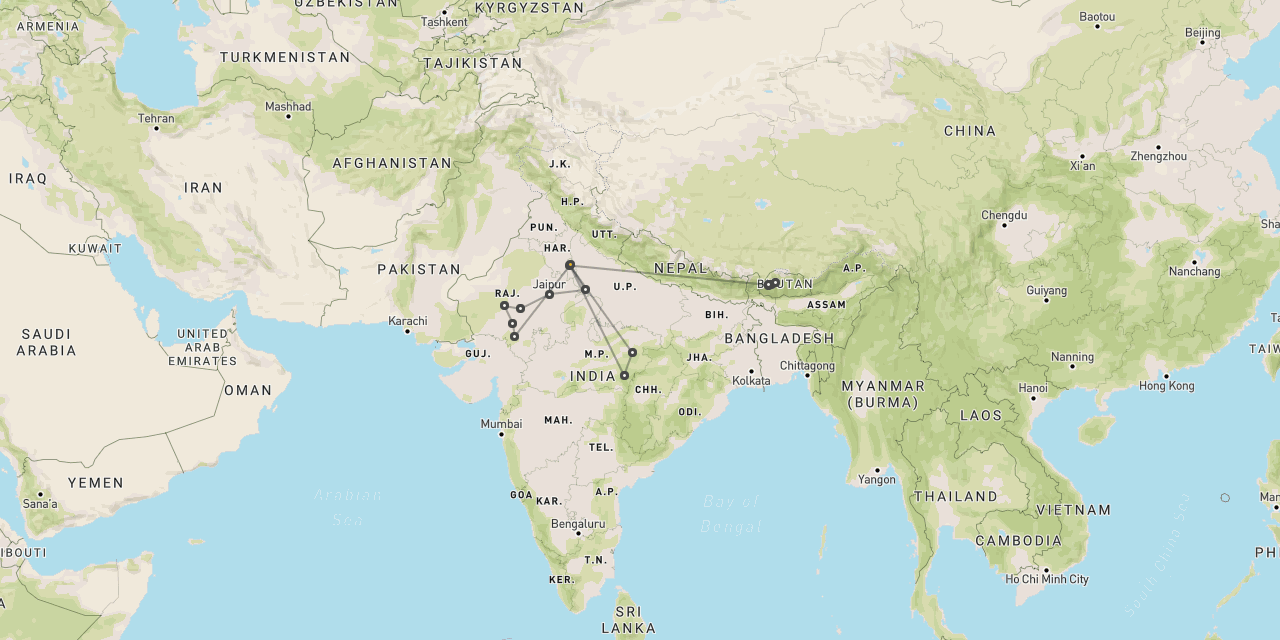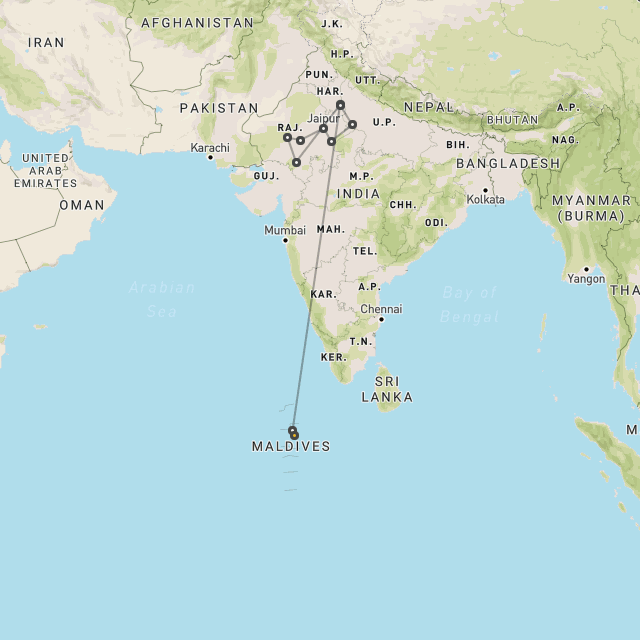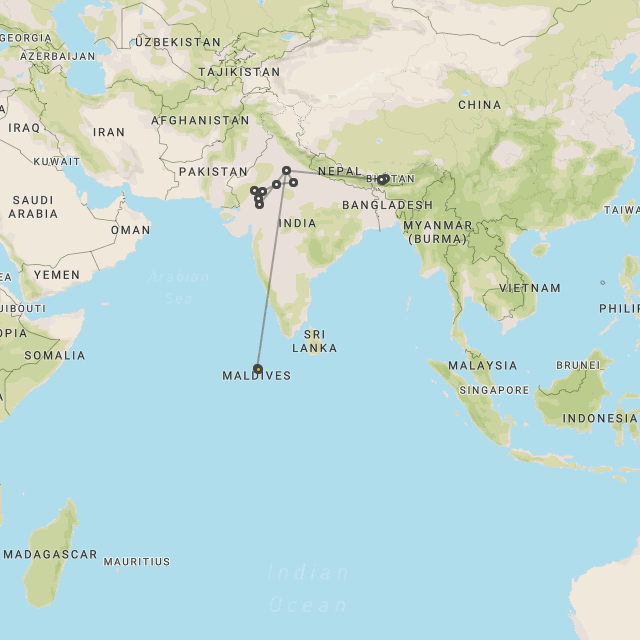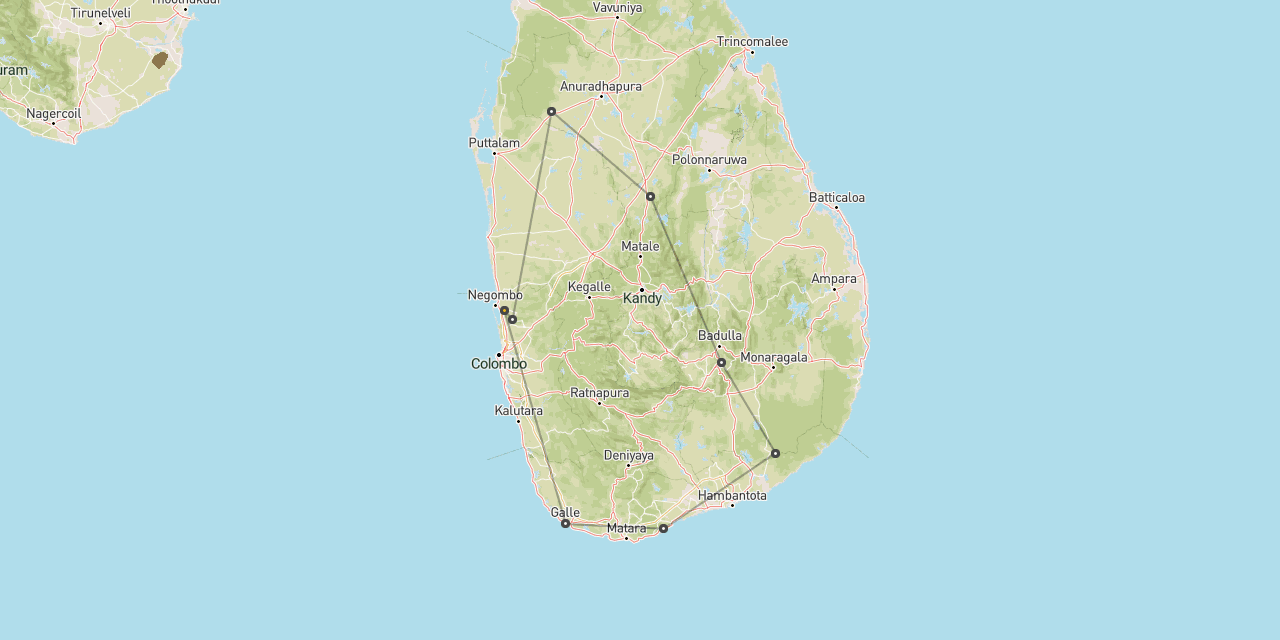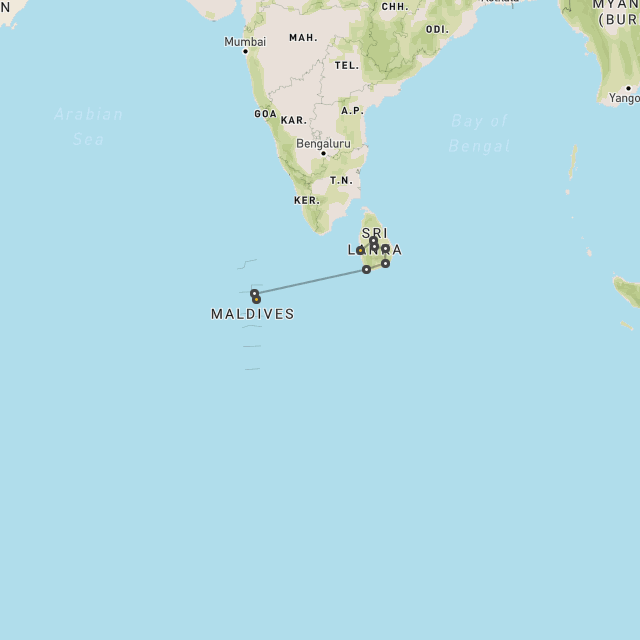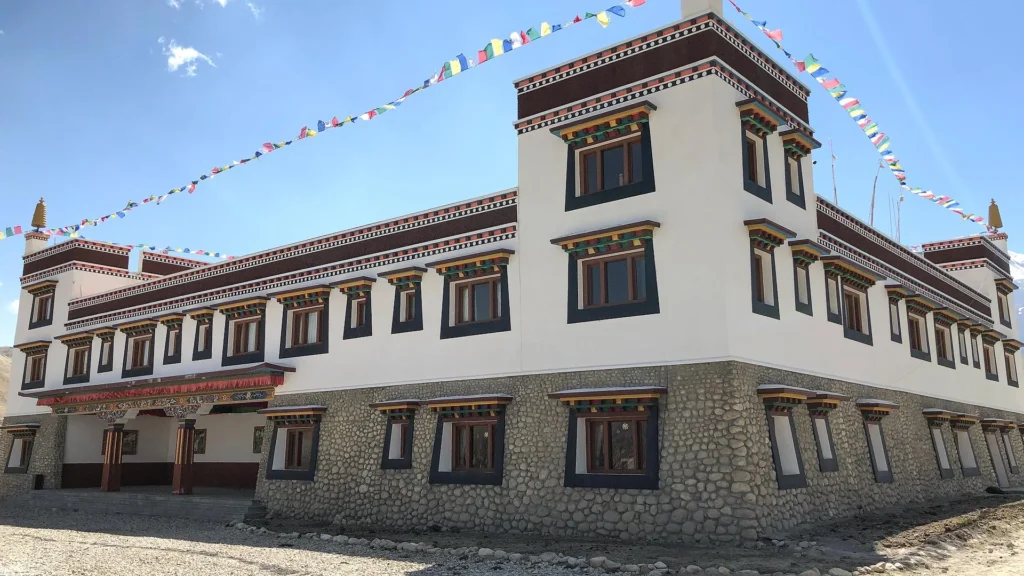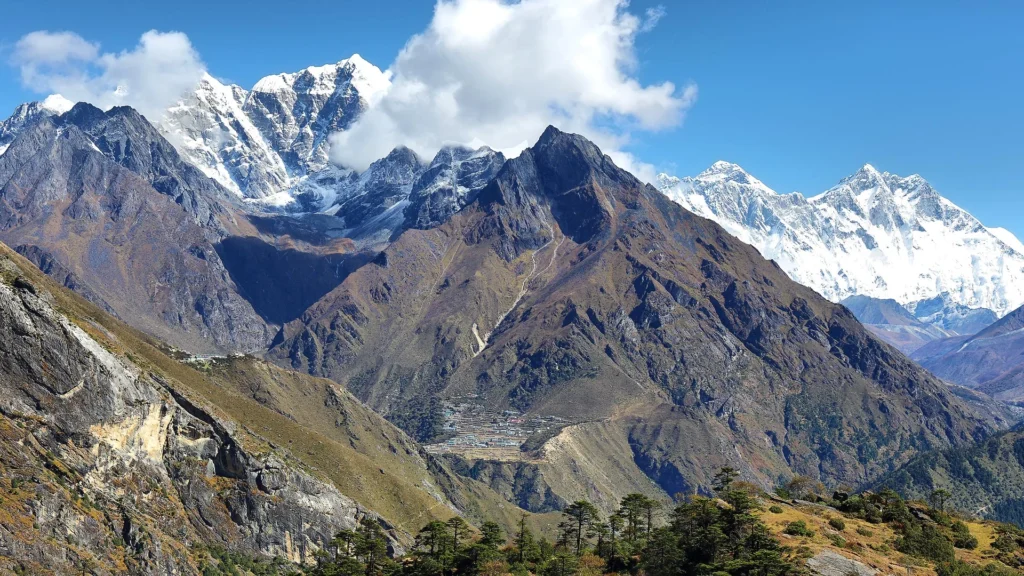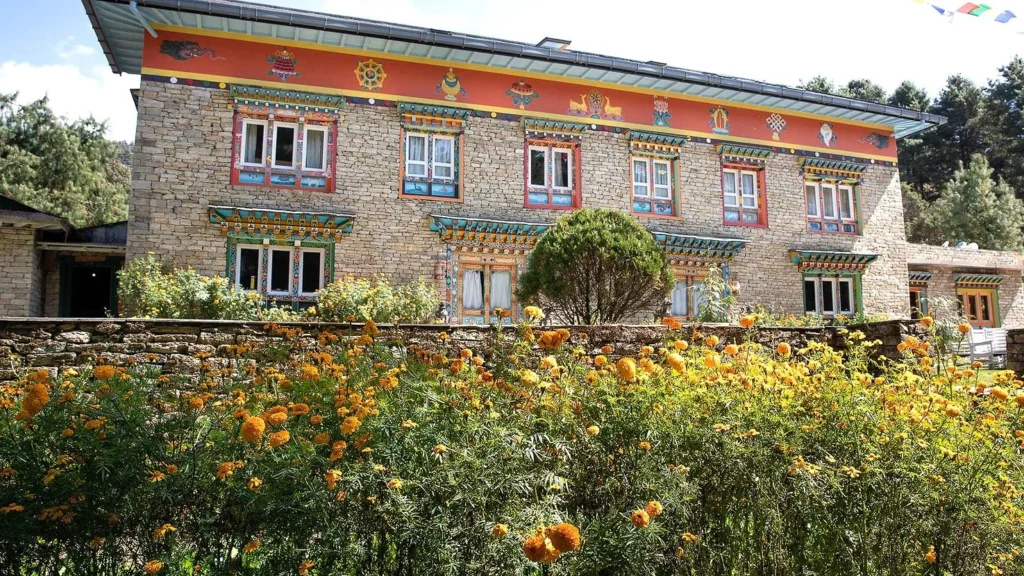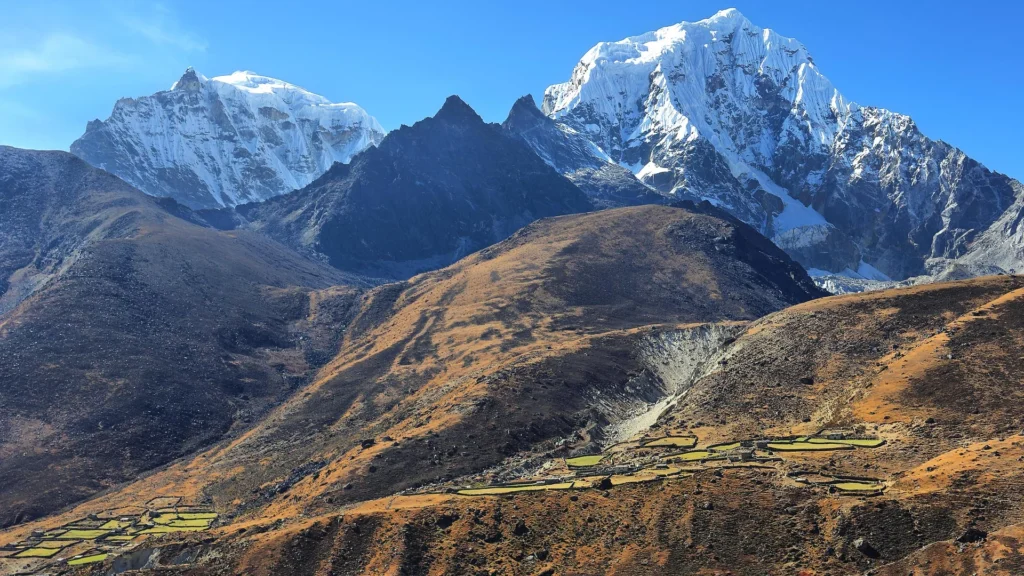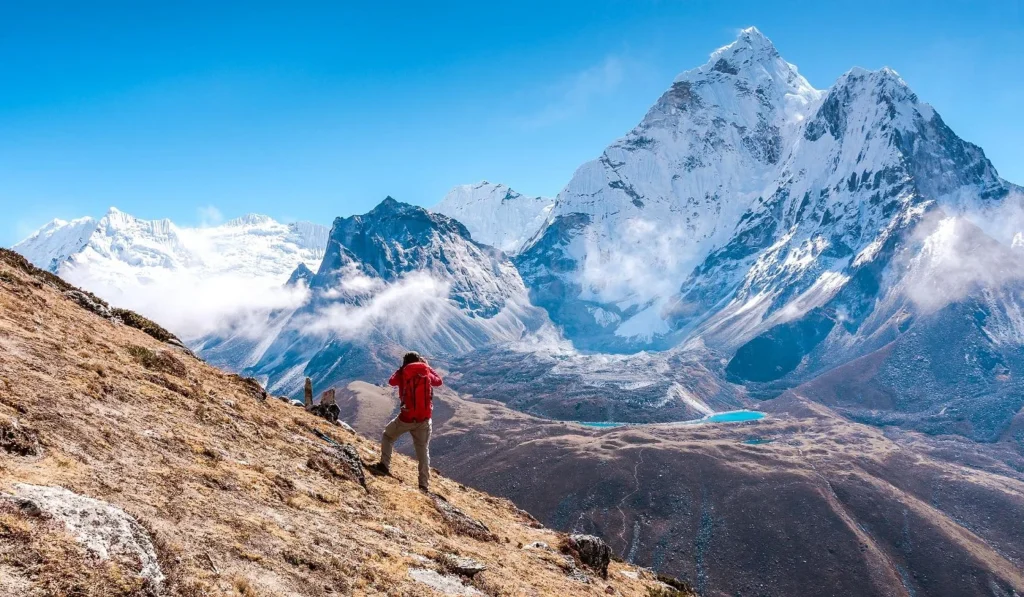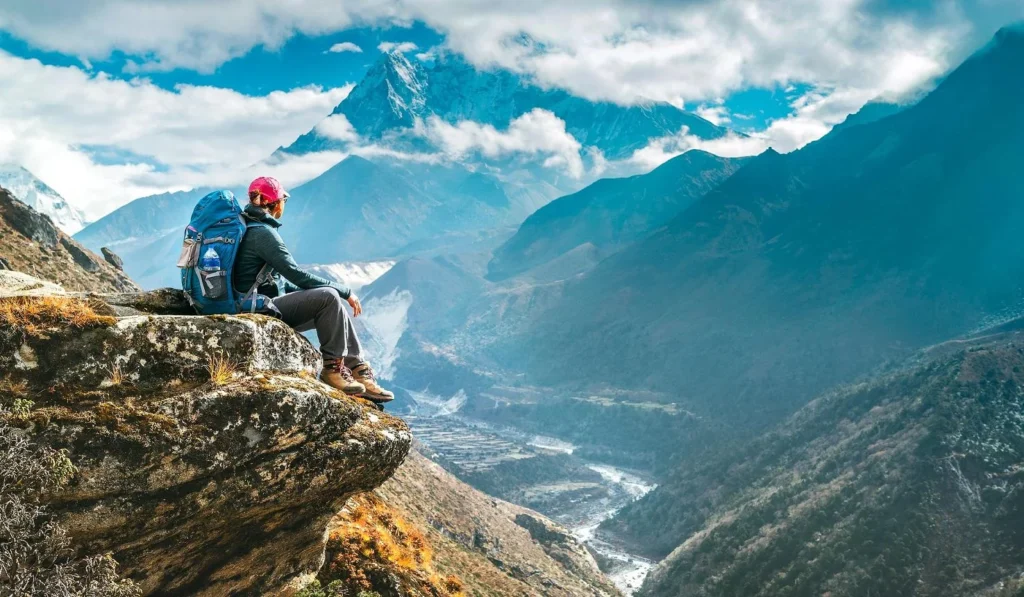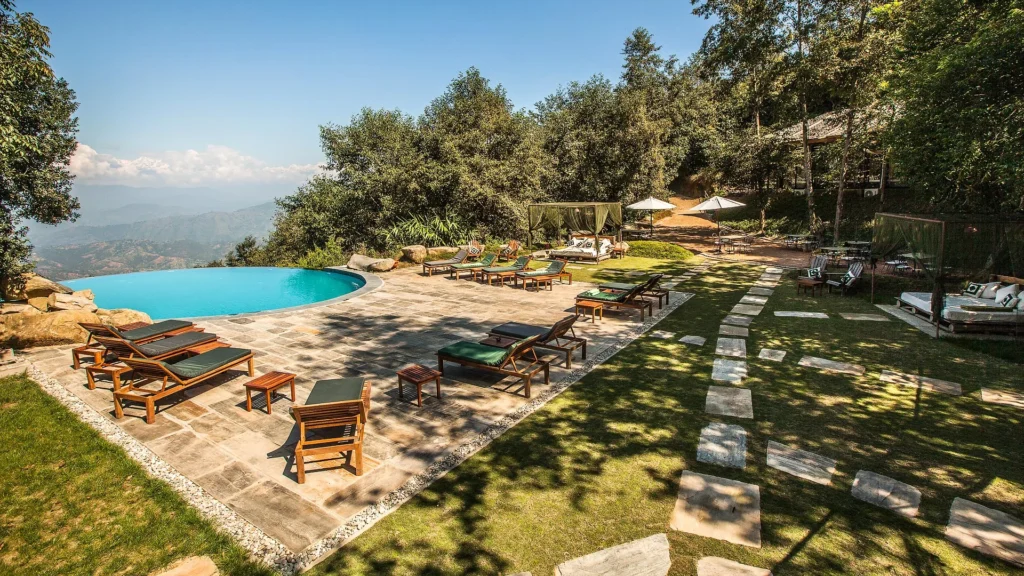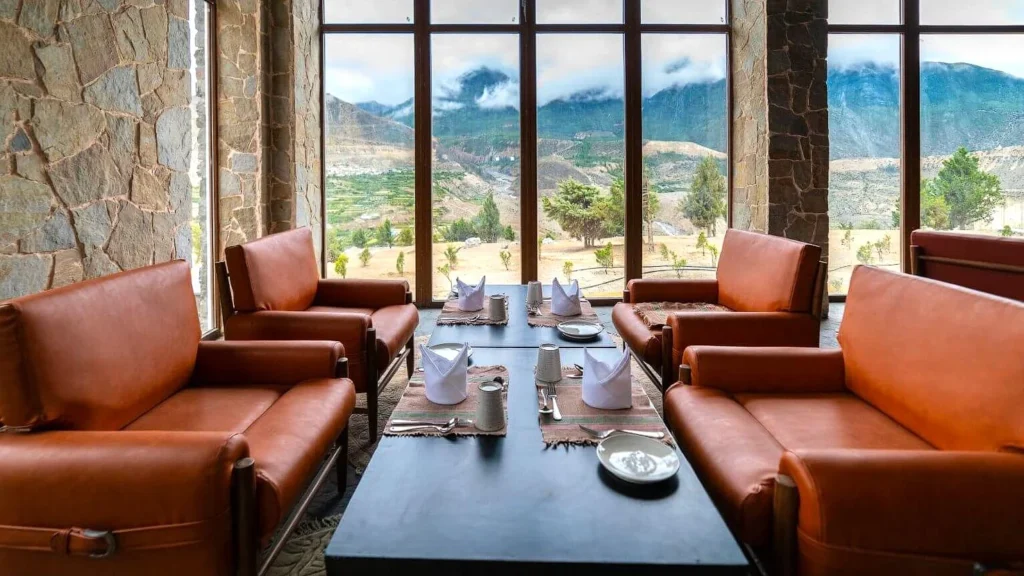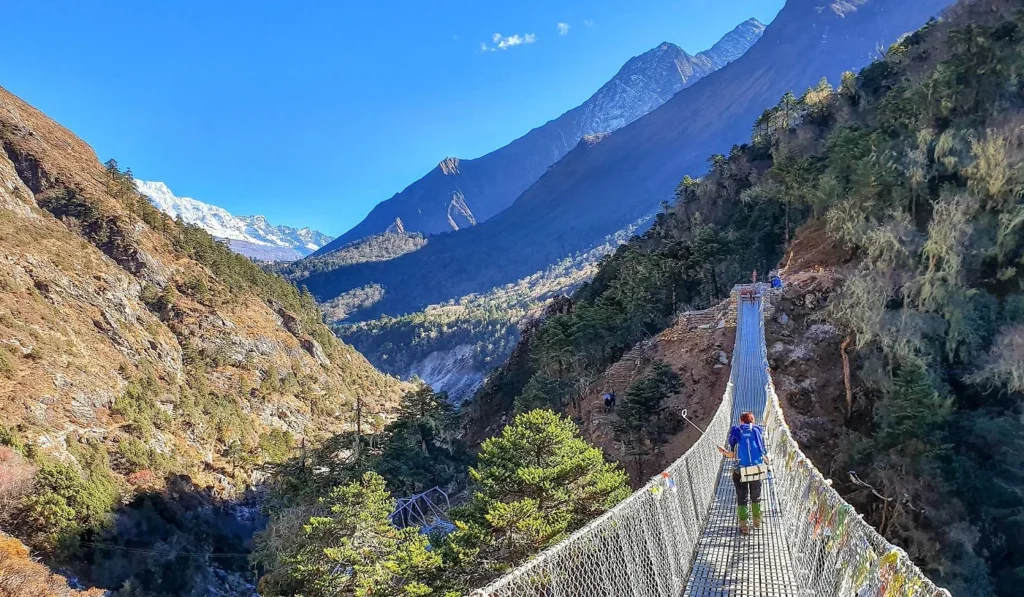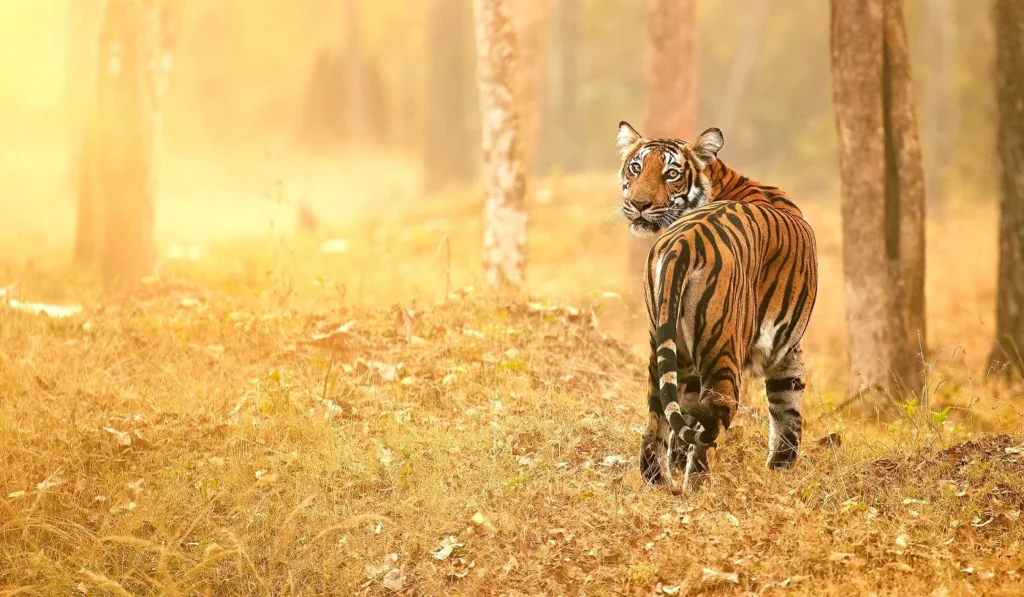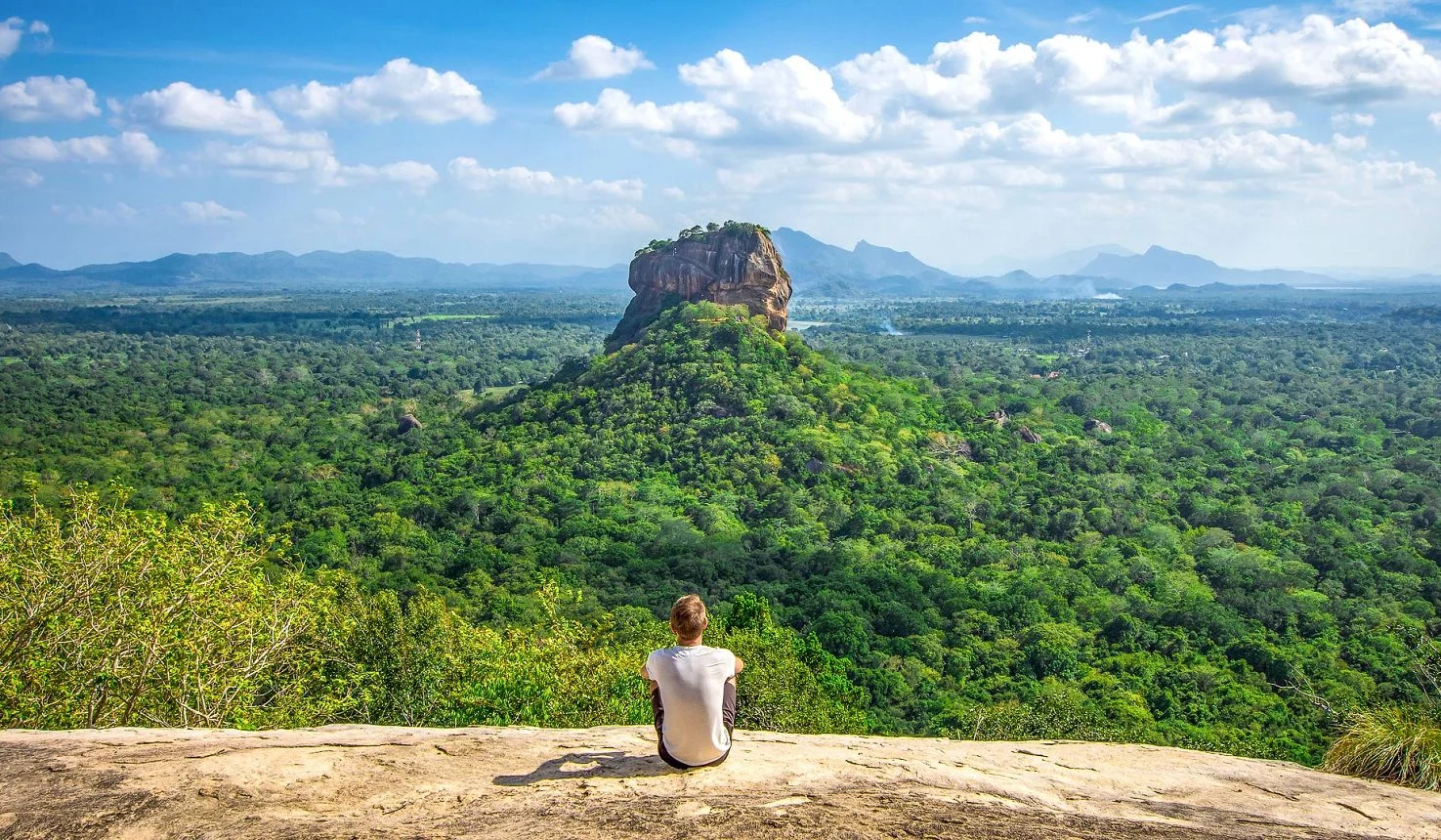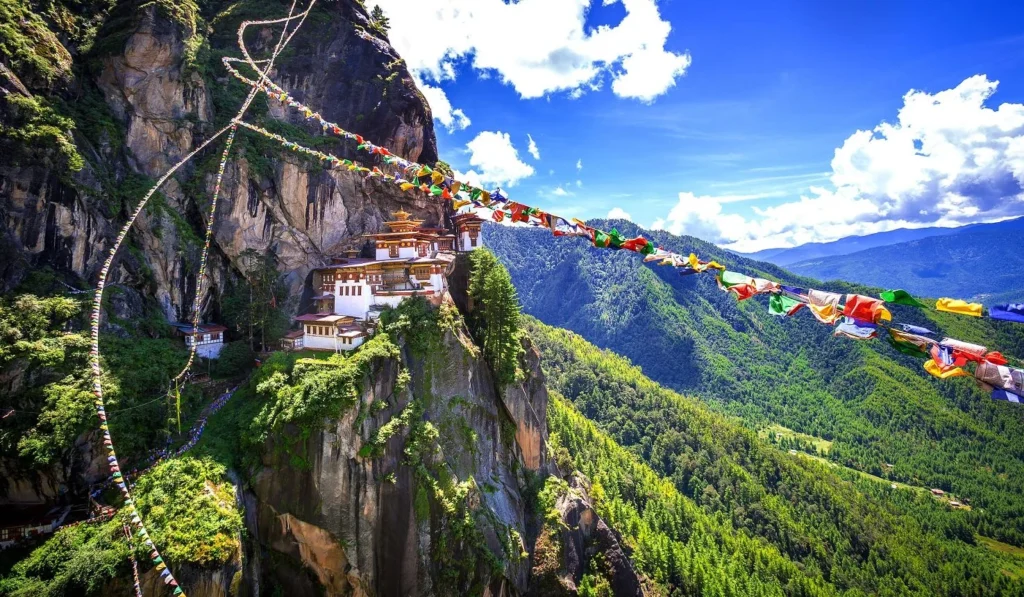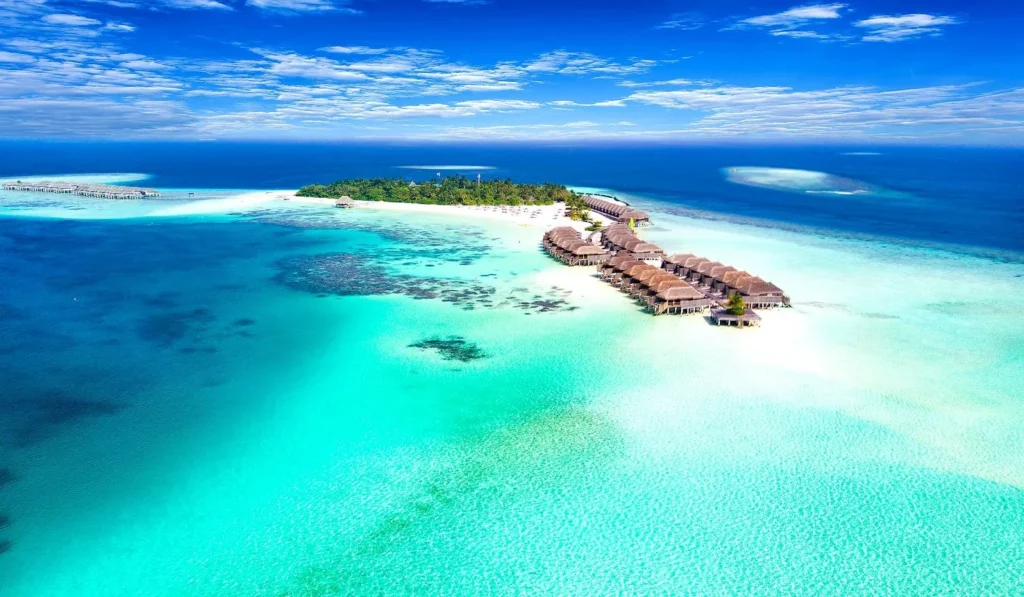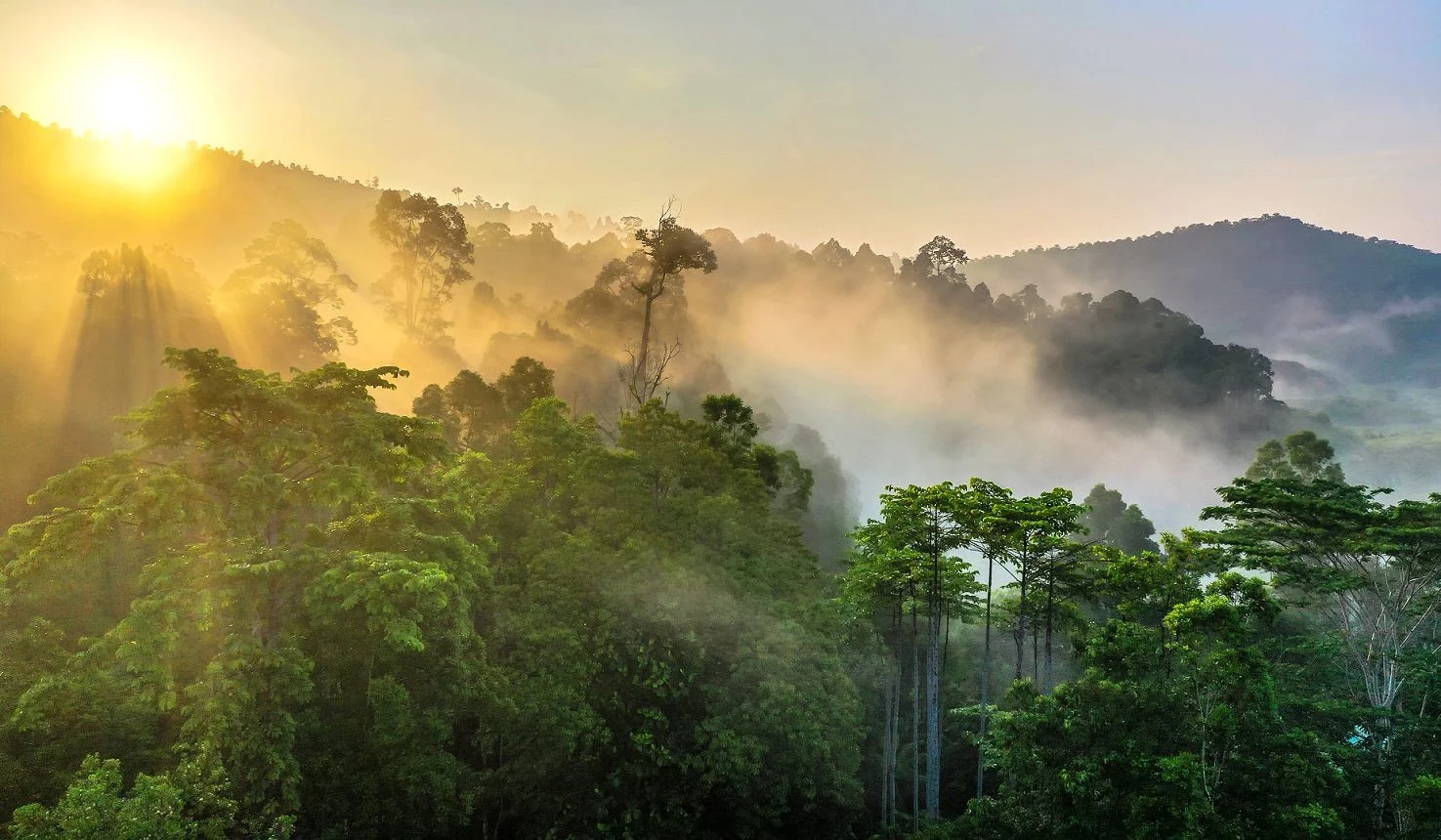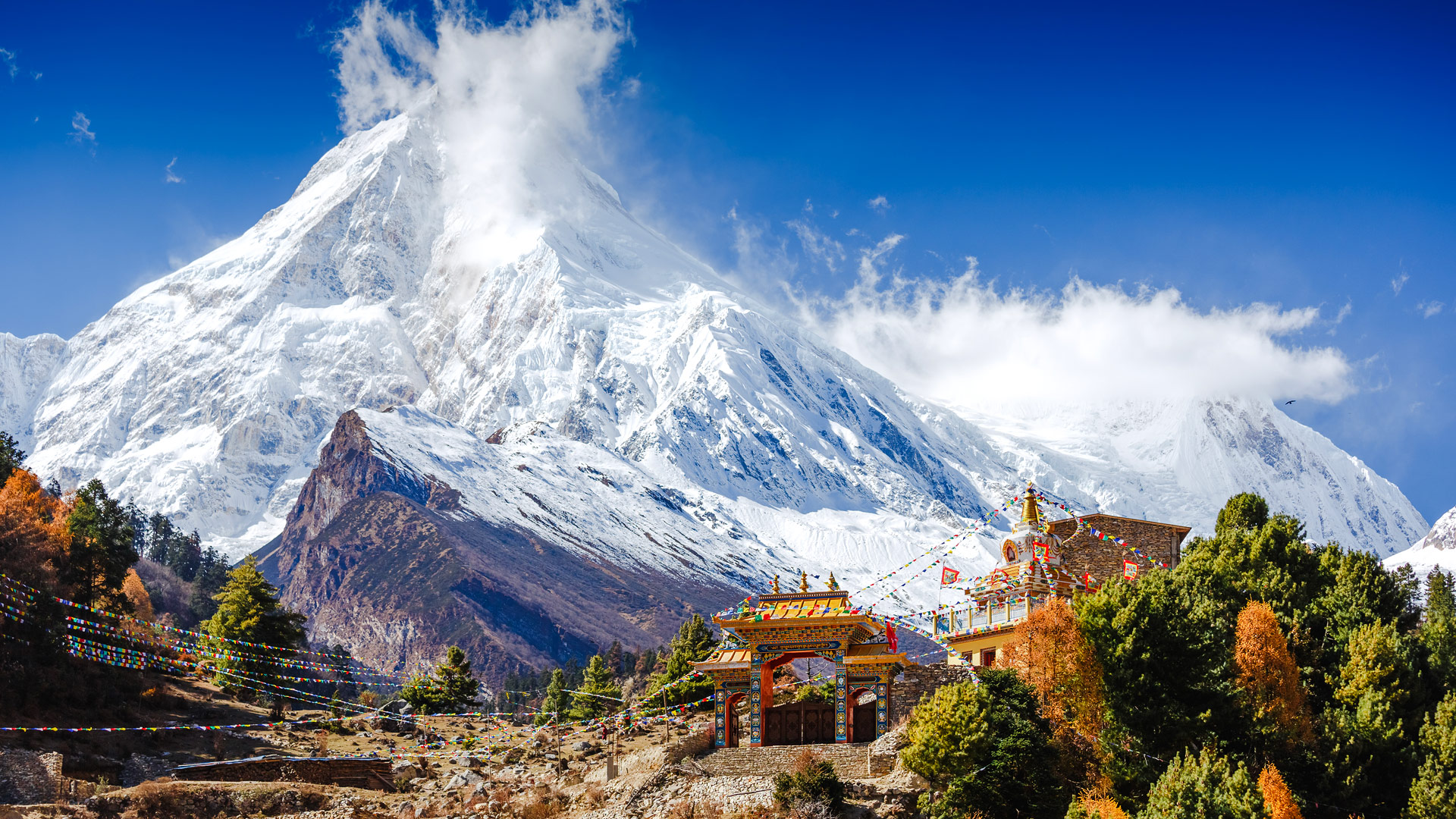
Travel in Nepal
Nepal
is the primary location
for trekking in the Himalayas

largely connected by trails rather than roads
Nepal is an extremely mountainous country, which runs from the high plateau of Tibet, over the high Himalayas, down through verdant lower valleys and out onto the plains of northern India.
The extremely wide range in altitude ensures an unusual number of climate zones and ecosystems, from alpine deserts to subtropical forests.
Nepal is a highly religious country, its devout people, impressive temples and various colourful festivals are a major part of the appeal of the place.
A couple of thousand years ago the country was primarily Hindu, but around 50 BC, Gautama Buddha, the founder of a new religion, was born in Lumbini in southern Nepal. These days the two religions coexist, with different regions being coloured by their different flavours.
The central valley of Nepal lay on a branch of the famous Silk Road, giving rise to a wealthy civilisation known as the Nepal Mandala, based around the three cities of Kathmandu, Patan and Bandipur.
During the 1700s and 1800s the dominant Gurka people created an alliance with the British, to provide a barrier between colonial India and Imperial China. In this way the country (remarkably) managed to avoid colonisation. The establishment of a secular republic in 2008 saw an end to the world’s last Hindu monarchy.
The vast majority of visitors to Nepal are attracted here for the epic trekking. The country contains eight of the ten highest mountains in the world. Not only are the high altitude areas remarkable, but the lower slopes are gorgeous, with their rhododendron forests and scenic rural villages.
Treks can also be combined with tiger safari down on the southern plains, with Chitwan being the most popular reserve.
Almost everyone spends at least a few nights in the central Kathmandu area, acclimatising to altitude and exploring the various historic sites. If you are not keen to do a longer trek, then you may choose to spend more time in this area, there are some lovely relaxed out-of-town lodges.
Perhaps our favourite trip shape combines the colour of the Kathmandu area, with a short comfortable trek or a longer hardcore trek in the Annapurna area, from where you can drive, hike and white-water raft your way down to the plains for a short safari. That’s a really lovely and wonderfully diverse set of experiences.
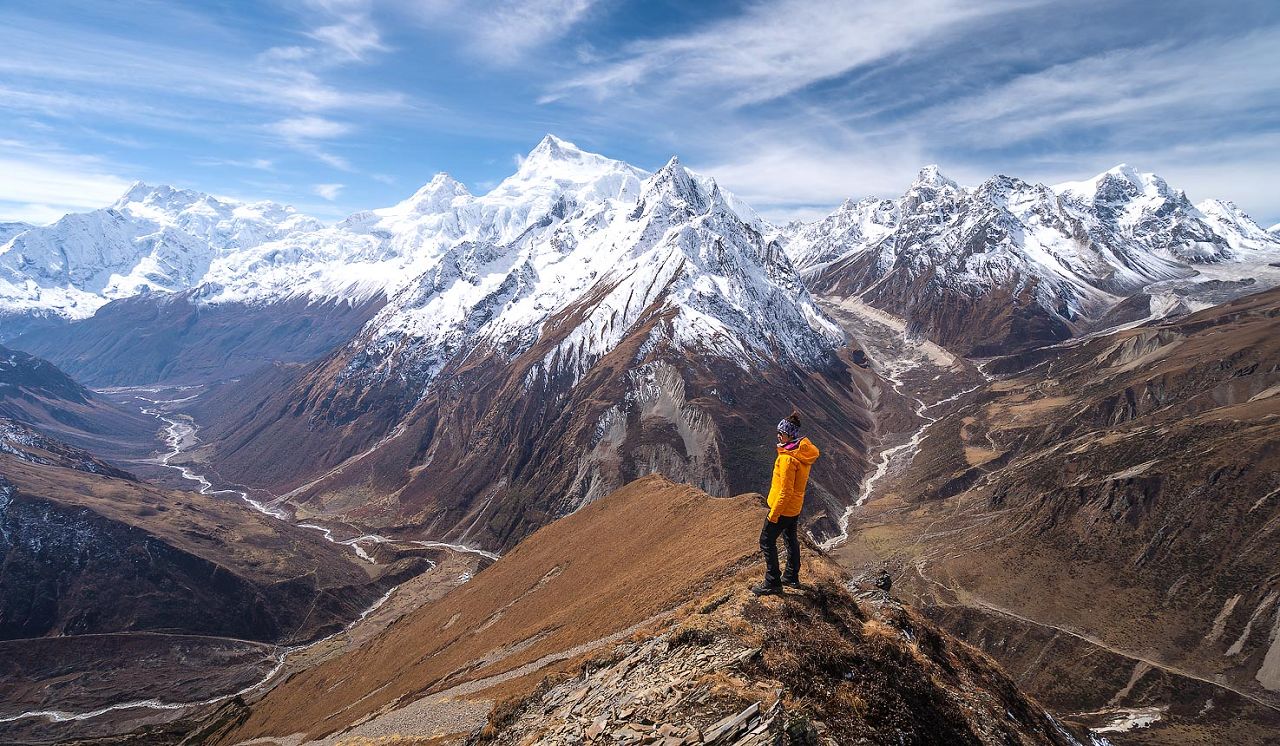
Gallery
Map
The best times of year to visit Nepal are generally considered to be the warmer seasons either side of the main monsoon, so Mar-Apr and October.
Whilst it’s true that the trekker traffic is naturally higher during these periods, the consequences of travelling at other times can be pretty serious. If you want a more peaceful time, then it’s usually best to travel at the right time of year but head for a less busy route.
If you are not intending to go trekking, the best time of year to visit the central valley around Kathmandu and the southern reserves like Chitwan is Oct-Mar, similar to most parts of India.
International flights
Almost all of our guests visiting Nepal enter and depart by air via the international airport in Kathmandu (KTM).
Whilst there are long haul routes direct into Kathmandu, it is more commonly reached via hubs in India (mainly Delhi) and the Persian Gulf (specifically Dubai and Oman).
Internal flights
Nepal has a limited network of internal flights, the two main routes being Kathmandu to Lukla (for the Everest area) and Kathmandu to Pokhara (for Annapurna) and Kathmandu to Bharatpur (for Chitwan).
Train connections
There are no train routes in Nepal.
It is vaguely possible to connect more southerly areas like Chitwan, by road across the border to reach stations on the Indian network, to head to Varanasi or Mumbai, but these are not easy routes and rarely feature in trips.
Road connections
The roads in Nepal are not cut out for quick and reliable transfers.
Around Kathmandu itself there is a good network of sealed roads, so it is easy enough to explore the central valley in the company of a driver-guide.
Some of the trekking areas closer to Kathmandu (Langtang and Manaslu) are usually accessed by road, but although the journeys are typically only around 100km (60 miles), they can take up to eight hours.
The popular but more distant areas of Everest, Annapurna and Chitwan are not generally connected by road.
One major exception is the connection between Annapurna and Chitwan, which is often done by means of a two day road and rafting expedition.
Trekking
Nepal is renowned for its fabulous trekking routes and the vast majority of international visitors to the country include a trek of 5 to 20 nights.
Virtually all treks stay every night in small comfortable hotels or simpler local teahouses. It is very unusual to camp out in tents when trekking in Nepal.
There are four main trekking areas, which are described in the Key Locations section and which can be compared in the Where to Stay section below.
Where to stay
The usual way to go about choosing where to stay during your trip is to start by selecting the locations you would like to visit, then looking at the various options in each area.
short trekking seasons Mar-Apr and October
let us know your thoughts about Nepal
and we will help you create the perfect trip
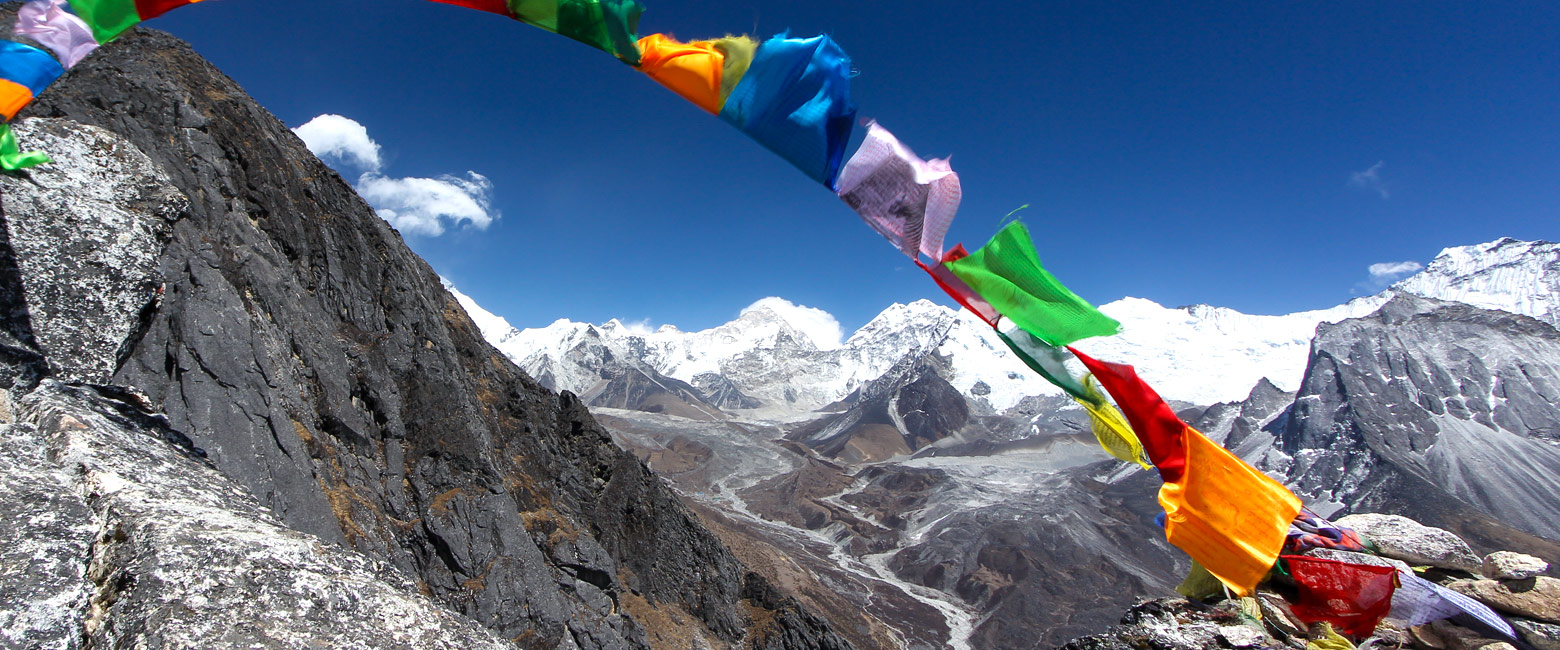
Extraordinary tailor-made adventures,
from earthy and edgy to easy and extravagant
From around USD 2500 per person, you set the ceiling
Sample Trips
Here are some of our popular trip shapes
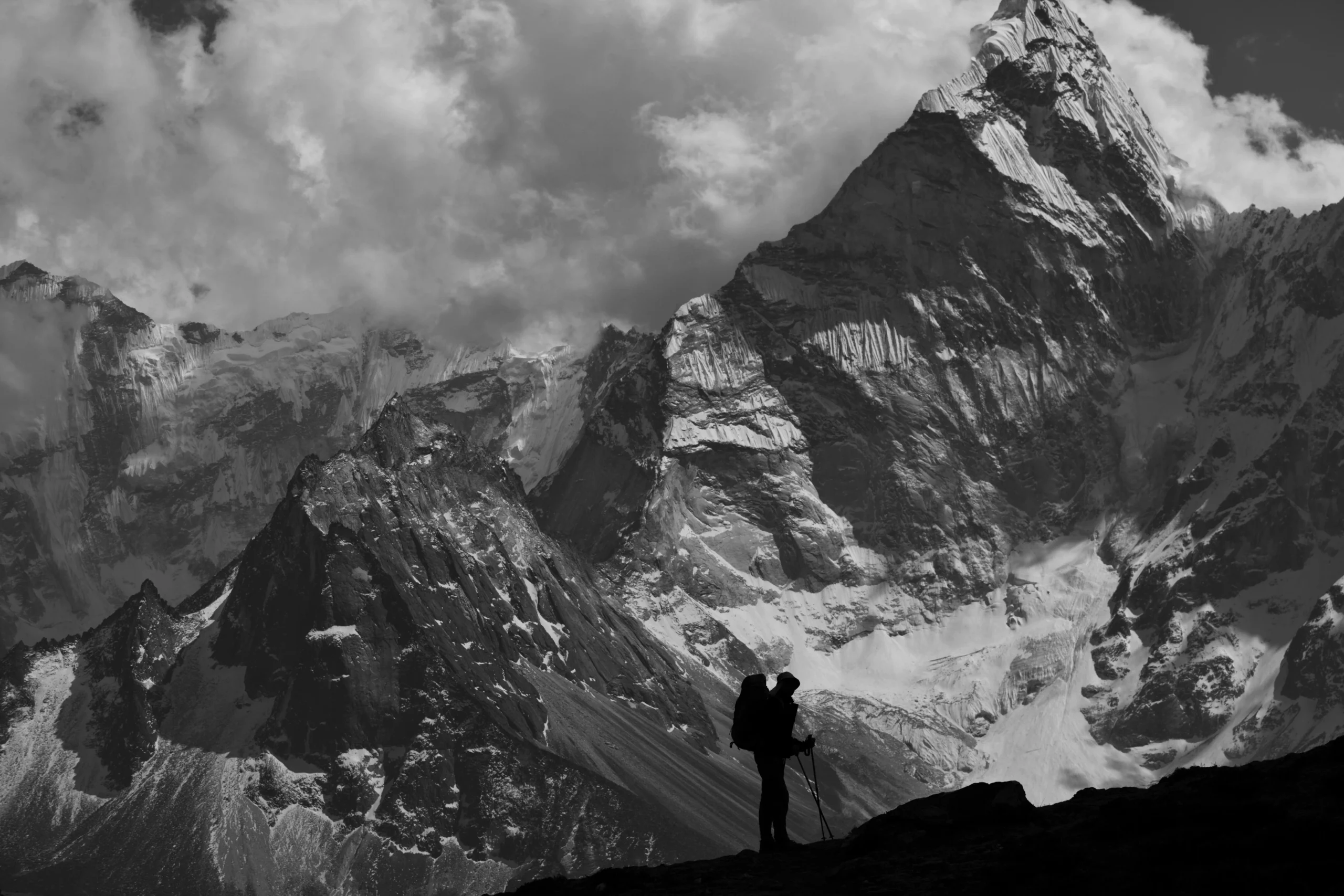
Get started on your trip
It’s never too soon to get in touch, we are here to help with every stage of your planning.
Best Lodges
We regularly inspect and photograph all of the the best lodges, to ensure that we always recommend the most suitable options
Key Locations
Take a look around related locations. Click ‘View more’ to explore locations further afield.

































